If you’ve noticed that your pothos plant has been looking a little droopy lately, you’re not alone. This is a common problem for pothos plants, and there are several possible causes.
That’s why, in this article, we will discuss the most common reasons why pothos plants droop, and we will provide tips on how to fix the problem, so your droopy pothos gets back to its happy, thriving self in no time at all!
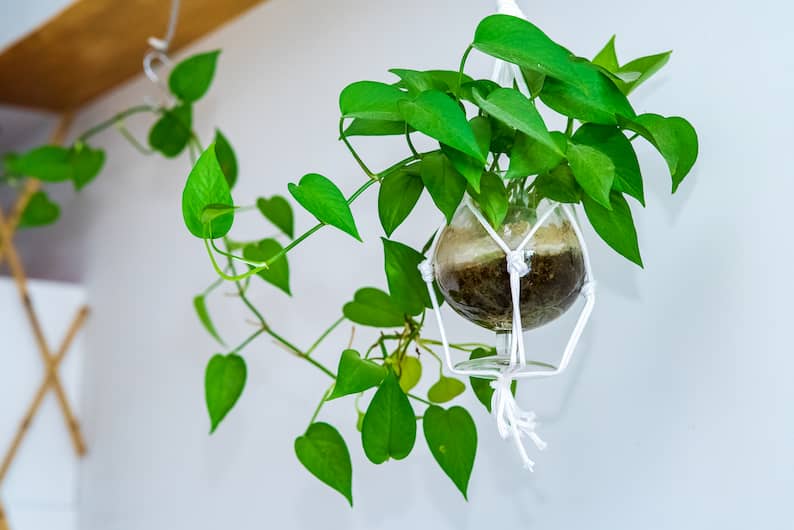
Table of Contents
Why is my pothos drooping?
It can be disappointing when your pothos is looking under the weather. You don’t, after all, want to be a bad plant parent!
The first step to solving the problem is to figure out what is causing your pothos to droop in the first place. Let’s take a look at some of the most common reasons for pothos drooping:
1. Your plant isn’t getting enough water
This is the most common reason why your pothos has droopy leaves and is usually a result of long-term neglect. While the pothos plant can survive if you miss a watering or two, it will start to droop if it doesn’t get enough water on a regular basis. The pothos leaves are not shiny or bouncy when they’re thirsty.
If your plant is drooping, the first thing you should check is the soil moisture. Stick your finger into the soil and see if it is dry to the touch. It should be moist approximately 2-3 inches below the surface. If the soil is completely dry, this is likely the culprit.
Want to know more about how often to water your pothos? Take a look here!
2. A lack of humidity
Pothos plants are native to tropical climates and prefer high humidity. If your home is dry, this could cause your pothos to droop. Since most homes are not naturally humid, you will need to create a humid environment or room for your plant.
3. Too much direct sunlight
Pothos plants thrive in bright, indirect sunlight. If your plant is getting too much direct sunlight, this could cause it to droop. The direct light can burn the leaves and cause the plant to become stressed.
Direct sunlight can also evaporate water in your plant’s soil or reduce the humidity around your plant, both of which can cause your pothos to droop.

4. Cold weather damage
If your pothos is drooping and the leaves are discolored or wilted, this could be a sign of cold weather damage. Pothos plants are not frost-tolerant and can be damaged by temperatures below 50 degrees Fahrenheit.
Check and see if your plant is near a cold window or drafts. If it’s near a door, this may affect the temperature around your plant as well. If so, this could be causing the problem.
5. The pothos is root bound
Pothos plants can become root bound if they are pot-bound for too long. This means that the roots have become too big for the pot and are constricted. When this happens, the plant cannot absorb enough water and nutrients, which can cause it to droop.
The plant will start to conserve energy until it’s in a container that’s the right size. You may notice that the pothos leaves are soft and wilted during this time.
Find out more: 7 Signs of a Root Bound Pothos (and How to Fix It)
6. There’s a pest infestation
Pests can also cause your pothos to droop. The most common pests that affect pothos plants are spider mites, mealybugs, and aphids.
These pests suck the sap from the plant, causing it to become stressed and weak. You may also first realize this is the case if your pothos develops brown stems, as this also shows a weakening of those stems which can, in turn, make your pothos droop more.
Your plant can catch these critters because of contact with other infected plants or from the outdoors. Once they’re on your plant, they can quickly multiply and cause serious damage.
7. Too much water
It might seem counterintuitive, but too much water can also cause your pothos to droop, especially given that your pothos needs drainage to thrive. If you’ve been watering your plant more frequently than usual or if the pot doesn’t have proper drainage, this could be the problem.
When there’s too much water, the roots can’t get the oxygen they need to function properly. This can cause the leaves to droop and the plant to become stressed. It can also lead to your pothos developing root rot, which is a serious problem that can kill your plant.
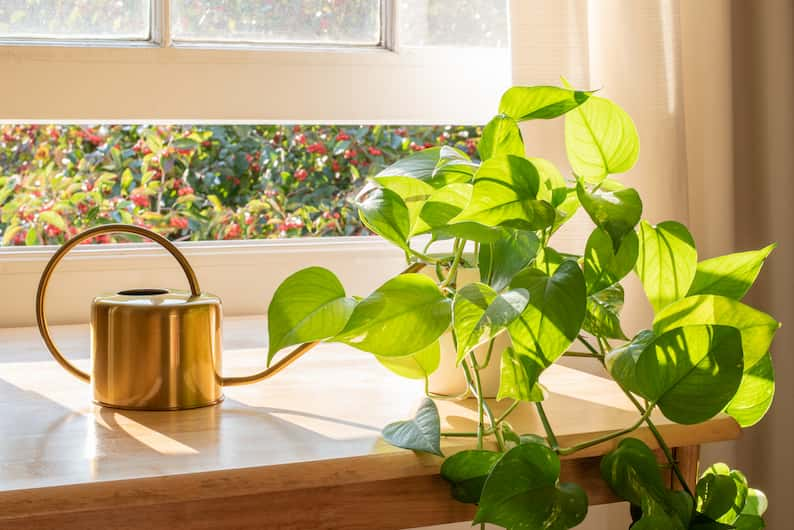
Why is my pothos droopy after watering?
Overwatering your pothos plant can literally explode the cells in the leaves, causing them to become limp and droopy. This happens because the roots can’t absorb any more water, so the plant starts to push moisture from the leaves, causing them to droop as the cell walls break down.
That happens because there isn’t a quick enough evaporation rate to replace the water being lost. This compromises the overall structure of your plant which keeps it upright when it’s healthy.
8. The plant has been repotted recently
If you’ve recently repotted your pothos, this could be the reason it’s drooping. When you move a plant to a new pot, it can be shocking for the roots. It can take a few weeks for the plant to adjust and start growing again.
If your pothos is droopy after repotting, the plant may lose some leaves and take on a slight yellow hue. This is normal (as long as the yellowing doesn’t increase) and nothing to worry about as long as the plant starts to recover within a few weeks. If the pothos is limp after repotting for more than a few weeks, then something else may be wrong.
Why do my plants look droopy after transplant?
After a transplant, a lot is happening to your pothos. It’s trying to grow new roots while also adjusting to a new pot and different soil. This can be a lot for the plant to handle, so it’s not surprising that it may look a little droopy at first.
It’s conserving the energy it needs to grow new roots, so it may lose some leaves in the process. Once the plant has adjusted, which is why it may not look as perky as usual above the soil.
It is likely to also receive different amounts or concentrations of nutrients and moisture since the new soil will have a different composition than the old one. This can also cause your pothos to look a little droopy as it adjusts to the new conditions.
9. It has a fungal or bacterial infection
Fungal and bacterial infections are another common reason for pothos drooping. These infections can cause the leaves to turn yellow or brown and drop off the plant. They can also cause the stem to rot, which can kill the plant.
You may notice that the leaves are wilted or that the stem is soft and mushy if your plant has a fungal or bacterial infection. These infections are usually caused by too much moisture.
How do you perk up pothos?
The best thing you can do to perk up your pothos plant is to keep an eye on it. First, monitor its water intake and assess whether it has too much or too little water. If water isn’t the cause of the drooping, then check for other environmental issues.
Once you identify the cause of your drooping pothos plant, here are some of our top tips for reviving it so that your pothos is fuller and bushier before you know it.
1. Water your pothos less frequently
If you think your plant is drooping because of too much water, the best thing you can do is cut back on watering. Let the soil dry out completely before watering again. You may need to water your plant less often than usual until it recovers.

In general, your pothos plant needs to be watered about once a week. Give it about a cup of water each time you water it. If the pot doesn’t have proper drainage, this could be the problem. Add drainage holes or change to a pot with better drainage.
If you’re still not sure how often to water your pothos, check the soil before watering. Stick your finger in the soil to see if it’s dry or moist. Wait until the top 2 or 3 inches of the soil are dry before you water your pothos again.
2. Create a humid environment
Pothos thrive in humidity. If the air in your home is dry, this could be the reason your plant is drooping. There are a few easy ways to create a more humid environment for your pothos:
- Group your plants together: This will help increase the humidity around your plants.
- Use a pebble tray: Place a layer of rocks or pebbles in a tray and add water. Set the pot on top of the tray to create a humid environment for your plant.
- Get a humidifier: This is an easy way to add moisture to the air and help your pothos thrive.
- Spray the leaves: Keep your pothos plant leaves moist. Spray them with water a few times a week to keep them happy.
These tips will help to revive your drooping pothos plant. With a little care, you’ll have a thriving plant in no time.
3. Move your plant to a new location
Pothos plants need bright, indirect light to thrive. If your plant is in an area where sunlight is directly hitting it, this could be the reason it’s drooping, especially if you’ve noticed signs that your pothos has sunburn. Move your plant to a new location where it will get bright, indirect light. This will help it to perk up and start looking healthier.
If your pothos is in a location with no light, such as a bathroom, it’s also likely to droop as well. Move your plant to a brighter location and it should start to look better.
Find out more about your pothos’ light needs here!
4. Replace the soil
Pothos plants need well-draining, loose soil to thrive. If the soil is too dense or compacted, this can lead to problems with drainage and oxygenation.
To fix this, you can replace the soil with a new potting mix. Be sure to choose the best potting mix for pothos plants, although you can also add some perlite or vermiculite to the potting mix to help with drainage.
Best soil for Pothos
Miracle-Gro Tropical Potting Mix
Light and well-draining (perfect for avoiding root rot) while being packed with just the right nutrients – that will feed your plant for up to six months. The best soil for keeping your pothos healthy and strong.
5. Adjust the temperature
Pothos plants like warm temperatures, between 65 and 80 degrees Fahrenheit. If the temperature in your home is too cold or hot, this could be the reason your plant is drooping.
The most common way cold weather affects a pothos is through a draft. Pothos plants are sensitive to drafts. These happen near windows, doors, or any other opening where cold air can come in. If you think there’s a draft near your plant, move it at least a few feet away from the cold spot.
6. Prune or trim your pothos plant
If your plant is overgrown, this could be the reason it’s drooping. The pothos grows fast by houseplant standards, so pruning or trimming your pothos plant will help it to look healthier and perkier.
Start by cutting off any dead or dying leaves. Then, cut back any long stems that are weighing down the plant. Once you’ve trimmed the plant, it should start to look better.
Find out more: 6 Simple Steps to Prune Your Pothos (Ultimate Guide)
Another reason you may need to trim your plant is because of pests. If your pothos plant is infested with pests, you can isolate the affected leaves and trim them off. This will help to prevent the pests from spreading and will help your plant to recover.
7. Fertilize your pothos plant
If your pothos plant is looking unhealthy, it may need to be fertilized. As you can see from my preferred choice below, a good all-purpose fertilizer can work well for pothos plants.
Be sure to follow the instructions on the packaging and apply the fertilizer as directed. This will help to improve the health of your plant and will also help to prevent problems in the future.
Best fertilizer for Pothos
Jack’s Classic 20-20-20 All Purpose Fertilizer
A great fertilizer with the perfect balance for your pothos. Simply dissolve in water and feed your plant to watch it thrive.
8. Repot your pothos plant
If you haven’t moved your plant to a new pot over several years, it’s likely that the roots are overcrowded.
Choose a pot that’s about two to four inches wider than the current pot. Be sure to use fresh potting soil and add drainage holes to the bottom of the pot. Gently remove your plant from its current pot and place it in the new one. Water it well and it should start to look better in a few days.
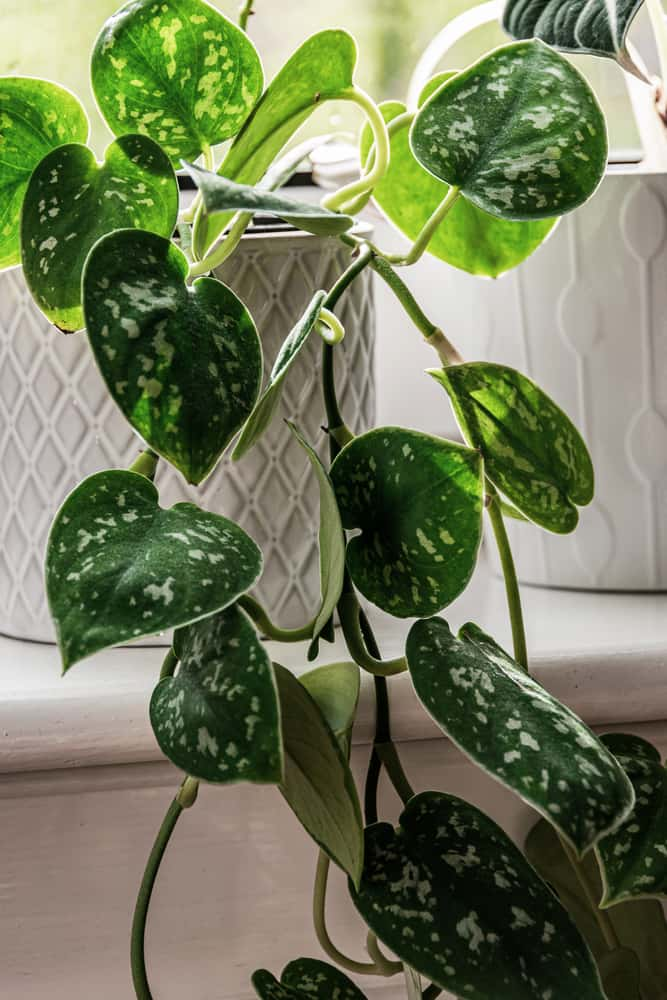
9. Soak your pothos in a sink
If your plant is looking droopy due to a lack of water, you can try soaking it in a sink. Fill the sink with 4 inches of lukewarm water and place your plant in the bath. Let your plant soak for about 30 minutes and up to an hour.
This will help to revive it and give it a new lease on life. Make sure not to leave your plant in the water for too long, as this can cause root rot and lead to the same cellular problems as overwatering your pothos.
10. Treat your plant to remove pests
If your plant is infested with pests, you’ll need to treat it to remove the pests. You can use oils such as neem oil or horticultural oil. These oils will kill the pests on contact and will also help to prevent new infestations.
You can also use insecticidal soaps or other similar products. Be sure to follow the instructions on the packaging and apply the treatment as directed. This will help to get rid of the pests and will also help to prevent new infestations.
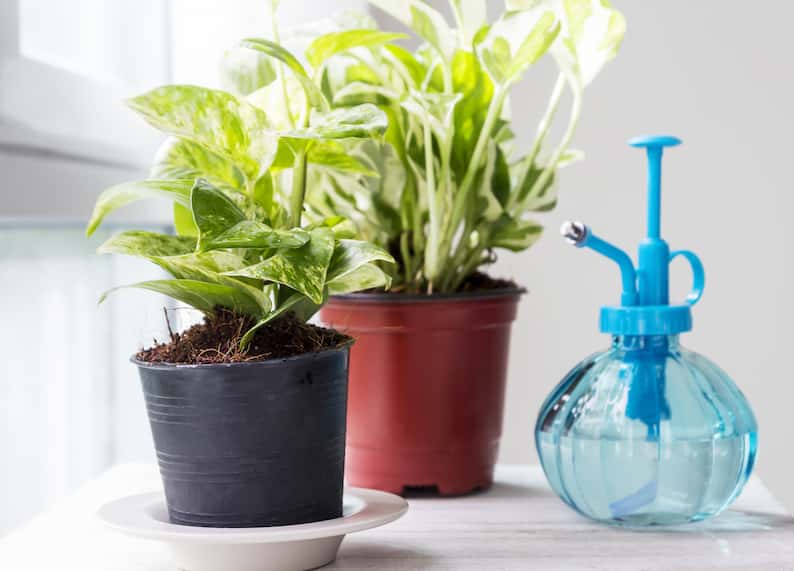
11. Place a fan near your pothos
If the droopy pothos leaves are due to high temperatures, you can try placing a fan near your pothos. The moving air will help to cool the plant and will also help to increase circulation.
The fan will also help to stimulate and strengthen the plant. This can help your pothos plant to become sturdy enough to hold itself up instead of drooping.
How long does it take for a pothos to perk up?
It usually takes a few days for a drooping pothos to perk up. However, if the problem is due to a lack of water, the plant may revive more quickly after being soaked in water. On the other hand, a pothos that’s drooping due to pests or diseases may take longer to recover.
Fertilizing your plant can also help to improve its health and vigor more rapidly. Similarly, if the problem is due to high temperatures, the plant will perk up more quickly if a fan is used to cool the air around it.
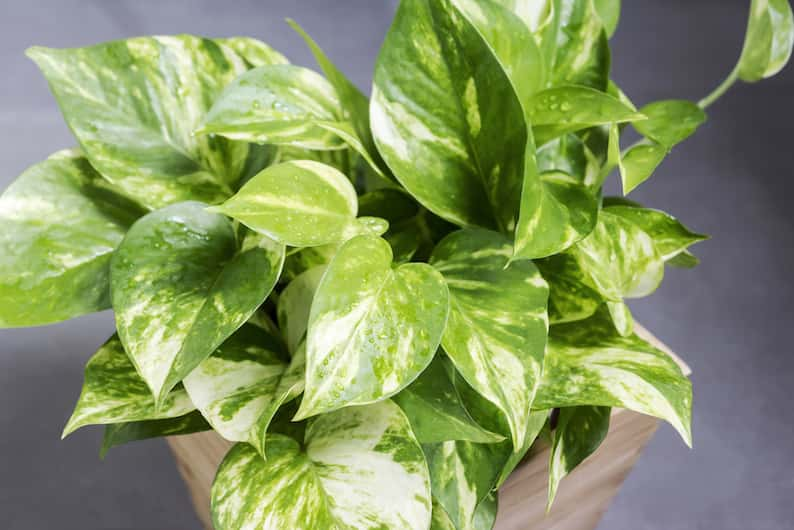
Ultimately, it depends on the severity of the problem and what is causing the drooping. With proper care, even if your pothos is droopy, it should recover just fine.
Remember, pothos plants are highly adaptable and resilient! They can bounce back from a variety of problems. Just be patient and give your plant the care it needs. With time, it will likely return to its healthy, lush self.
Why is my pothos droopy and yellow?
The yellow leaves on your pothos plant are most likely caused by too much water in the soil. This can lead to problems with drainage and oxygenation, which can cause the leaves to turn yellow. To fix this, you can water your plant a bit less, as well as increase the drainage in your pot.
You can do this by adding a layer of gravel or rocks to the bottom of the pot, as well as using a potting mix that is designed for pothos plants or other similar vines. You can also add some perlite or vermiculite to the potting mix to help with drainage.
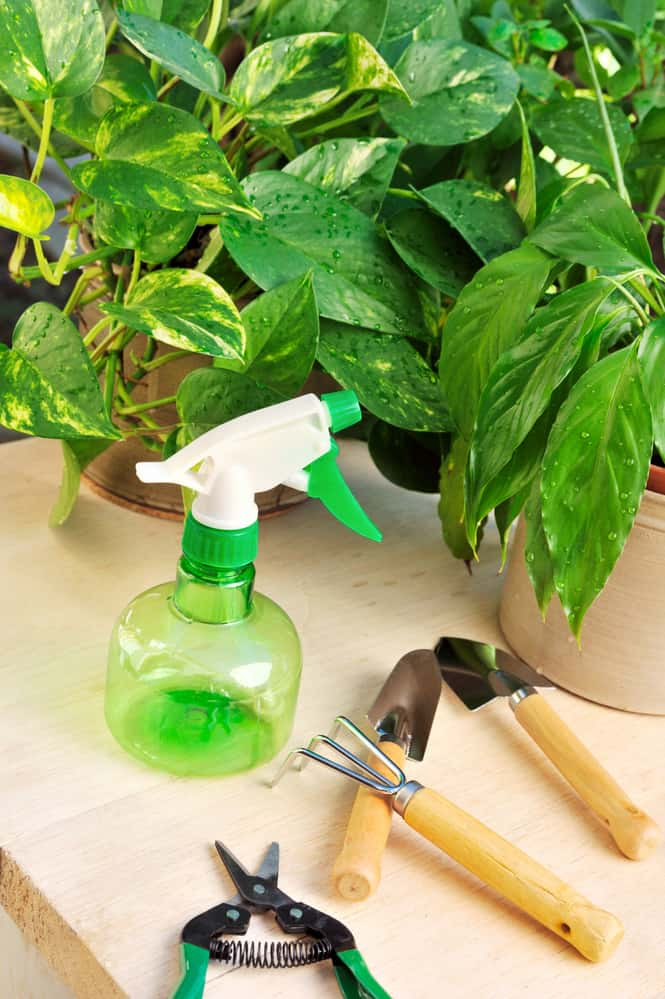
The second most common reason your pothos has droopy yellow leaves is a lack of water. When your plant doesn’t get enough water, the leaves will start to turn yellow.
To fix this, you can water your plant more frequently. Be sure to check the soil before watering to make sure that it is dry at least 2 or 3 inches deep, regardless of whether your pothos is being underwatered or overwatered.
Nutritional deficiencies can also lead to the yellowing of your leaves. A yellowing houseplant may be the sign of an iron, nitrogen, zinc, or manganese deficiency. You can solve this by using a fertilizer that is designed for your specific plant or all-purpose indoor plant fertilizer.
Why is my pothos wilting in winter?
Pothos plants are tropical plants, which means they prefer warm temperatures. When the weather starts to cool in autumn and winter, your plant may start to experience some stress. This is normal and isn’t a cause for concern, especially if you haven’t found any pests, diseases, or other problems.
You may see yellowing or brown spots on your pothos and the plant may start to wilt as the plant is responding to the cooler temperatures.
Relatedly, the dormant season for the pothos plant is from late autumn to early spring. During this time, the plant will grow more slowly and may even stop growing altogether. The leaves may also start to die back.
How do you take care of a pothos in the winter?
First, you can try to increase the humidity around the plant. You can do this by placing it on a pebble tray or using a humidifier.
You should also cut back on watering during the winter. Don’t water your pothos more than twice a week and consider using a reduced amount of water as well. Be sure to check the soil before watering to make sure that it is dry at least several inches deep.
Finally, you can protect your plant from drafts and cold temperatures by placing it in a warm room and away from cool windows or doors.
By following these tips, you can help your pothos to stay comfortable during their dormant period.
Why do I have a droopy pothos cutting?
If you have a droopy pothos cutting, it is likely because the cutting is not getting enough water. The leaves of the cutting will start to turn yellow or brown and the plant may wilt. The water can quickly evaporate from the pot, so be sure to check it regularly and water it as needed.
You can also try misting the leaves to help increase the humidity around the plant.
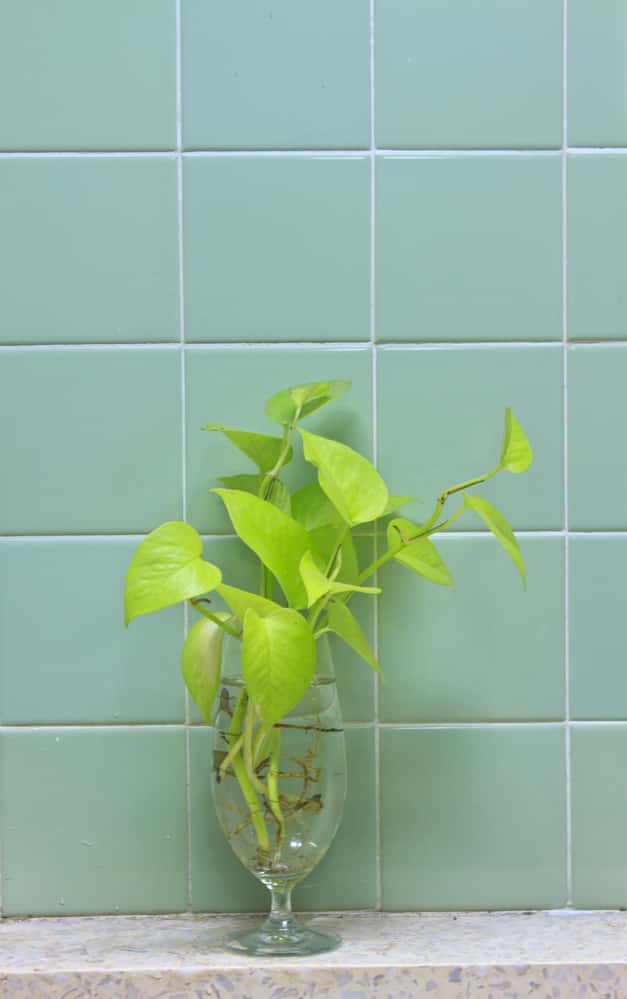
Another reason your pothos cutting is wilting is that you may have cut too long of a stem. When you make a cutting, be sure to cut only a couple of inches from the main plant. This will help the cutting to root more quickly instead of struggling to send all of the energy to the leaves.
Finally, your pothos cutting may be droopy because it’s been placed in direct sunlight. Pothos plants prefer bright, indirect light and may not create roots if they’re under the pressure of direct sun.
How do I fix a droopy pothos cutting?
The first way to fix a droopy cutting is by regularly giving water. It should be in well-draining soil and you should water it when the soil is dry to the touch. If the cutting is in water, make sure to fill the container frequently and consider adding a small amount of fertilizer to stimulate root growth.
If you have cut too long of a stem, you can try trimming it back to a couple of inches. This will help the plant to focus its energy on the roots and leaves, instead of trying to maintain a long stem.
Finally, if your cutting is in direct sunlight, try moving it to a location with more indirect light. Pothos plants prefer bright, filtered light and too much sun can cause the leaves to turn yellow or brown. The perfect location for your pothos cutting is in a spot that receives bright light but is not in direct sunlight, such as a few feet away from a large window.
Final thoughts
A drooping pothos isn’t usually the end of the world and while it is a clear indicator that there’s a problem, most causes of this aren’t going to be life threatening to your plant if you catch the issue in time.
Of course, noticing that your pothos has droopy leaves isn’t ideal. At the same time, you should be able to use the process of elimination to see just why your plant is reacting in this way.
In most cases, simply by adjusting your regular plant maintenance, you should be able to fix those droopy pothos leaves in no time. Some problems, like pests or bacteria, can take a little more work to fix. However, once you figure out the issue of why your pothos is droopy and start to address it, your plant should be back on the road to good health before you know it.


